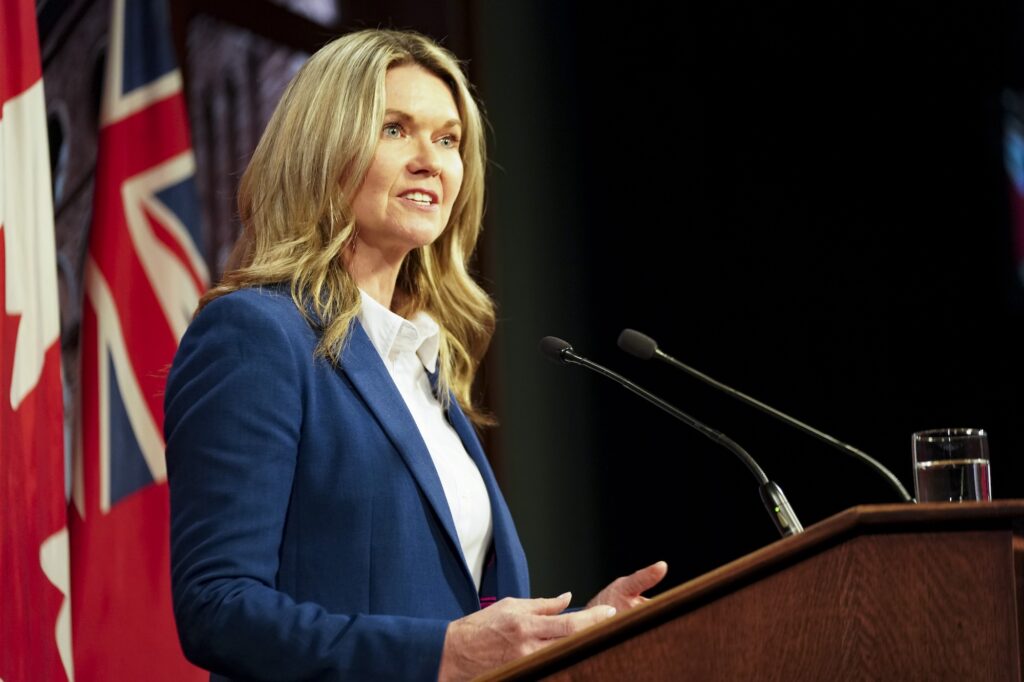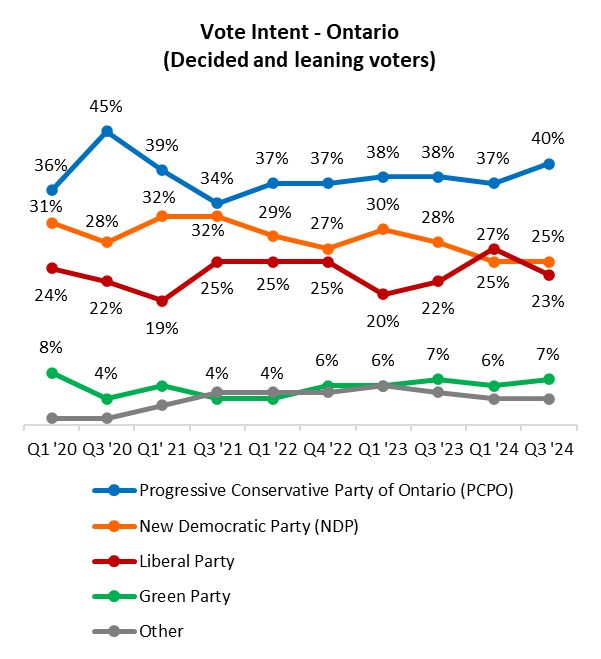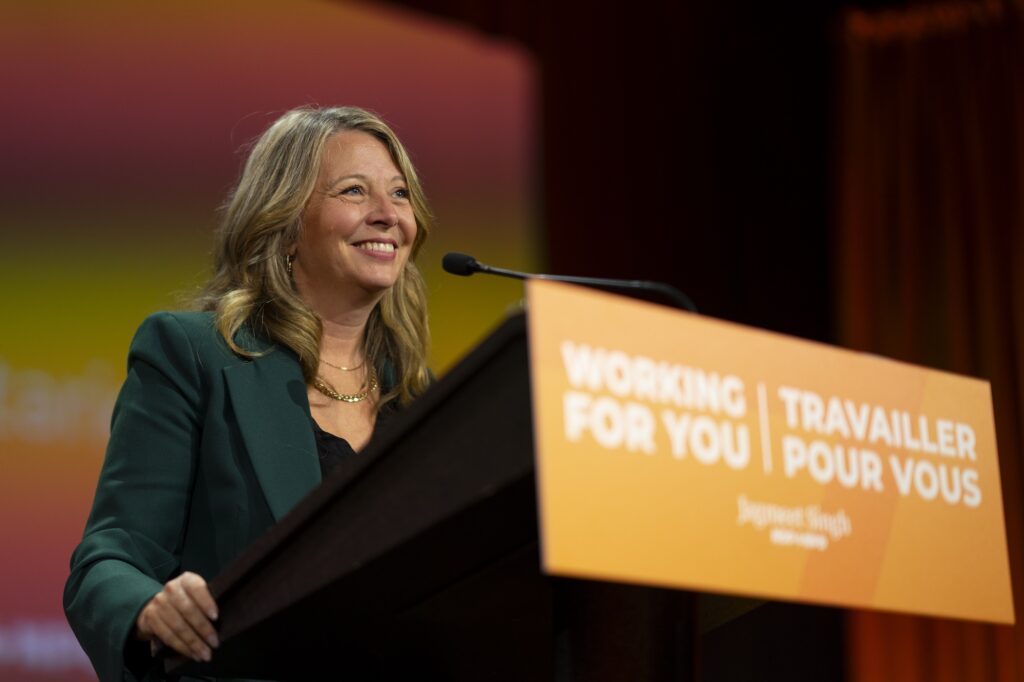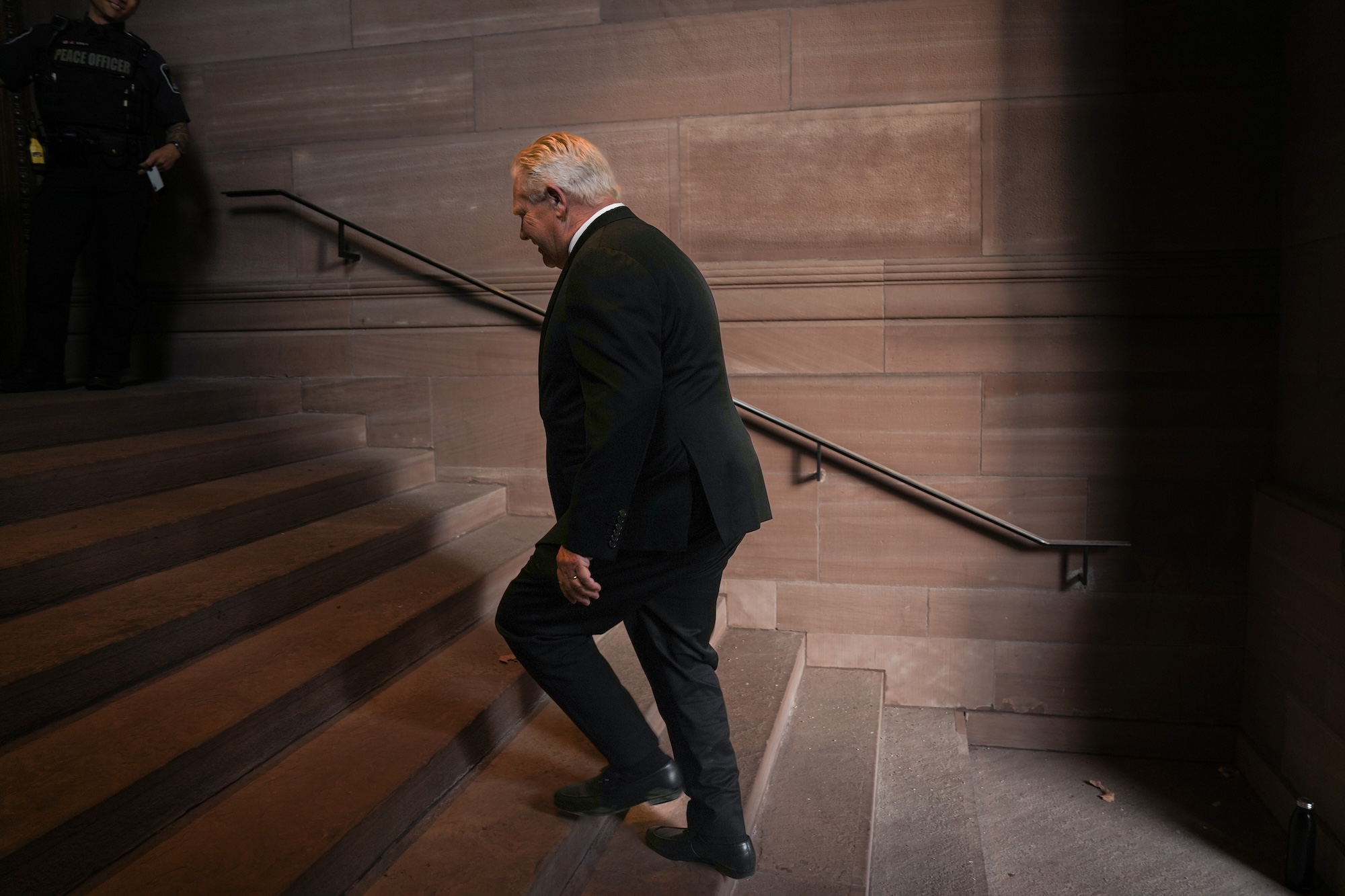What can we expect in the Legislature?
With the recent announcement of requiring municipalities to receive approval from the province to install bike lanes, Premier Ford and Minister Sarkaria will be introducing upcoming legislation that focuses on tackling gridlock and getting drivers and commuters out of traffic. We understand that the government intends to introduce the “Tackling Gridlock to Save Time Act” as one of its first pieces of legislation for the fall.
We also expect there to be further legislation that will be focused around red tape reduction on other major critical infrastructure proposals this fall.
Ontario’s Fall Economic Statement is projected to be delivered on October 30th, and we expect legislation to be tabled that will include a $200 cheque for every person in Ontario to assist in cost-of-living pressures.
Many of the bills introduced – across all sectors – received Royal Assent on June 6, 2024. The main pieces of legislation to watch are:
State of play
The Ontario Legislative Assembly is back in session today, following an eventful summer of barbequing and politicking. Some key developments from over the summer were:
Premier Ford is still leaving the option for an early election open after spending months refusing to rule out calling a vote. An early vote would get ahead of a possible federal Conservative government or potential criminal charges from the RCMP probe of the province’s Greenbelt land swap. The next Ontario general election is currently set for June 2026, but speculation continues for a possible spring 2025 election.
According to a Toronto Star exclusive, the Fall Economic Statement will be on October 30, 2024 and Premier Ford is ready to send a $200 tax-free rebate to every adult and child in the province, resulting in a $3.2 billion cost to the Ontario Treasury Board.
The RCMP investigators are still focusing on the $8.28 billion land swap scandal with the Greenbelt and at least eight current and former top aides to Premier Ford have been interviewed – in the presence of lawyers. The scope of work has been focused on the premier’s office and not the office of the minister of municipal affairs, who was originally blamed.
The Ontario Public Service Employees Union (OPSEU) reached an agreement with the LCBO after a two-week strike earlier this summer. Around 10,000 LCBO workers walked off the job on July 5th, forcing the closure of hundreds of LCBO retail stores across Ontario and limiting many alcohol products. Union leaders argued the risk of Ontario’s decision to allow the same wine, beer and ready-to-drink cocktails in convenience stores and grocery stores could jeopardize people’s jobs. However, during the strike, Premier Ford doubled down on the alcohol expansion, accelerating the availability of alcoholic drinks to grocery stores that were already licensed to sell wine and beer. Premier Ford also released an interactive map detailing retailers that sold alcohol across the province.
In June, the Ontario Science Centre permanently closed because of structural issues. Infrastructure Ontario commissioned an engineering report that found many roofing deficiencies. Repairing these deficiencies would cost $22M to $40M and would take over two years to complete. Since the facility has been a part of Ontario culture for decades, there was much public disagreement with the permanent closure and disagreement was further elevated when the former Ontario Place surfaced as a new location.
There was another cabinet shuffle in mid-August because Minister Todd Smith resigned as the Minister of Education and as the MPP for Bay of Quinte. As a result, Minister Jill Dunlop became the new Minister of Education and Nolan Quinn became the Minister of Colleges and Universities. On September 19, there was a by-election for Bay of Quinte and PC MPP Tyler Allsopp will represent the constituency.

Public Accounts – providing the final audited financial results of the province for the fiscal year ending March 31, 2024 – show that Ontario currently has increased annual revenues of $13B from the previous year and total investments of $195.2B across all programs. This represents a 4.7 percent increase in program spending over the previous fiscal year. Notable investments include:
- Infrastructure investments increased by 22.9 percent, to a total of $23.6B.
- Health sector program spending increased by 8.9 percent, to a total of $85.5B.
- Education sector program spending increased by 7.6 percent, to a total of $37.2B.
According to Angus Reid Institute, the PCPO increasing its vote advantage over the opposition despite mounting criticism from Ontarians on the government’s performance on key issues, not to mention widespread disapproval of Premier Doug Ford. Two-in-five (40%) Ontarians would vote for the PCs if an election were held today, while statistically equal groups of one-quarter say they would vote NDP (25%) or Liberal (23%).

Political context
Ontario Progressive Conservatives
In his recent speech to the Empire Club, Premier Ford laid out his main priorities for the fall sitting. The three anchors for Ford are fighting gridlock, unleashing Ontario’s energy potential, and being an ally to the US government, as Ontario would be the third largest US trading partner if it were a stand-alone country.
With respect to becoming a strong ally to American state and federal lawmakers, Ford has turned more pointedly critical of the federal government. Ford called on the federal government to ban foreign (particularly Chinese) computers in Canadian EVs, similar to calls south of the border. He also took aim at the Digital Services Tax (the DST), calling it an issue that has bi-partisan consensus in the US and threatens thousands of technology jobs in Ontario should US-based tech companies’ close facilities here because of the federal policy.
This sharp turn to being critical of the federal government is noteworthy because Ford needs to develop the case for going to the polls early, and this might be one reason his team is cultivating. As Ford is currently benefiting from strong polling numbers and a divided opposition, using the Trudeau Liberals as the point to rally voters around may be the strategic wedge that plunges the province into an early election in 2025, with a year left in the mandate.
Ontario New Democratic Party
To mark the start of the new session, Ontario NDP leader Marit Stiles is focusing on speaking directly to Ontarians by recognizing the frustration they feel – whether it be working harder and falling behind, or the controversies miring Premier Doug Ford and his cabinet.

Talking about Ford’s “continued costly failures” and highlighting housing, health care, education and affordability as the issues the Ontario NDP caucus will be focused on, expect Stiles to put the lack of action on those issues at the Premier’s feet.
With rumours of a potential early election, the Ontario NDP has been working to nominate candidates across the province and get Stiles out to all parts of Ontario – in friendly crowds and less friendly crowds, like at the Empire Club in late September. With a few seasoned MPPs running federally, the Ontario NDP has been hard at work finding new champions in those ridings like former city councillor and mayoral candidate Catherine McKenney in Ottawa Centre.
Another sign of election preparedness is the new “It’s Marit” ad campaign. For the first time this year, Marit Stiles’ Facebook page has been utilizing ads to introduce herself to people. The NDP have run these ads leading into the new session, which were live from September 30 to October 17.
Ontario Liberal Party
Chosen as party leader last December, Ontario Liberal Leader Bonnie Crombie has struggled to gain traction with voters in making the case that she is the clear alternative to Ford to become Premier of Ontario.
In the first half of this year, the Ontario Progressive Conservatives spent tens of millions of dollars on negative ads aimed at portraying Crombie as someone who favours higher taxes and continuation of the consumer carbon tax, notwithstanding Crombie’s assertion that she would cancel the tax.
Those Ontario voters opposed to Ford appear to split between the Ontario Liberals and Ontario New Democrats, to the apparent benefit of the governing Conservatives.
The Ontario Liberals remains hampered by strong voter dissatisfaction with Prime Minister Trudeau and the federal Liberals, which is having a negative impact on the Liberal brand broadly.
Crombie must focus on the formidable challenges of fundraising, candidate recruitment and policy platform development if the Ontario Liberals are to have a reasonable chance of forming government following the next Ontario election.
Looking forward: government priorities
As noted by the increased spending of infrastructure, Transportation and Infrastructure ministries are undertaking a major investment in the technical evaluation for the construction of a new driver and transit tunnel under Highway 401. It will relieve some of the gridlock north of Toronto, extending from beyond Brampton and Mississauga in the west to beyond Markham and Scarborough in the east. This is part of the $100B infrastructure plan to build and expand highways across the province. In a similar vein, Ontario provided $73M to the City of Toronto to accelerate the construction on the Gardiner Expressway to speed up the timeline from April 2027 to April 2026.
The Ontario government began consultations with the College of Nurses of Ontario and other health care partners on expanding the scope of practice for nurse practitioners. As well, the Ontario government is consulting with partners to expand the ability of pharmacists to treat common ailments, administering more vaccines, and performing more point-of-care testing. These two consultations are part of Health Minister Sylvia Jones’ effort to expand health care services with the aim of developing a greater focus on community care and taking pressure off Ontario’s medical system.
In Ontario’s energy sector, Minister Lecce has taken on the issue of extending the EV battery supply chain network and establishing more clean energy projects across the province. In June, Ontario provided Ontario Power Generation (OPG) with approximately $1 billion investment to refurbish eight hydroelectric generating stations in Eastern Ontario. In September, Ontario unveiled a new battery storage project in southwestern Ontario – the Tilbury Battery Storage Project – that will store 80 megawatts of power. These are only two of the several announcements that have taken place over the past few months that show the progress of clean energy, the expanded focus on electrification, and the advanced manufacturing agenda that has been a focus for Premier Ford.
Due to international student and Post-Graduate Work Permit changes by the federal government, Ontario’s post-secondary institutions are struggling financially. Preoccupied by the Bank of Canada’s concern of the federal government meeting its 5% target of temporary workers to the total Canadian population, the federal government is further reducing the number of international students in Canada by 10% and including post-graduate students for the first time. Presidents of Ontario’s public colleges and universities have been speaking out about the impact of these changes. This fall, the Ontario government will be announcing the institution-by-institution caps for 2025 and 2026.
Insights in this piece contributed by Rob Leone, Charles Bird, Mélanie Richer and Nastassia Varela.








